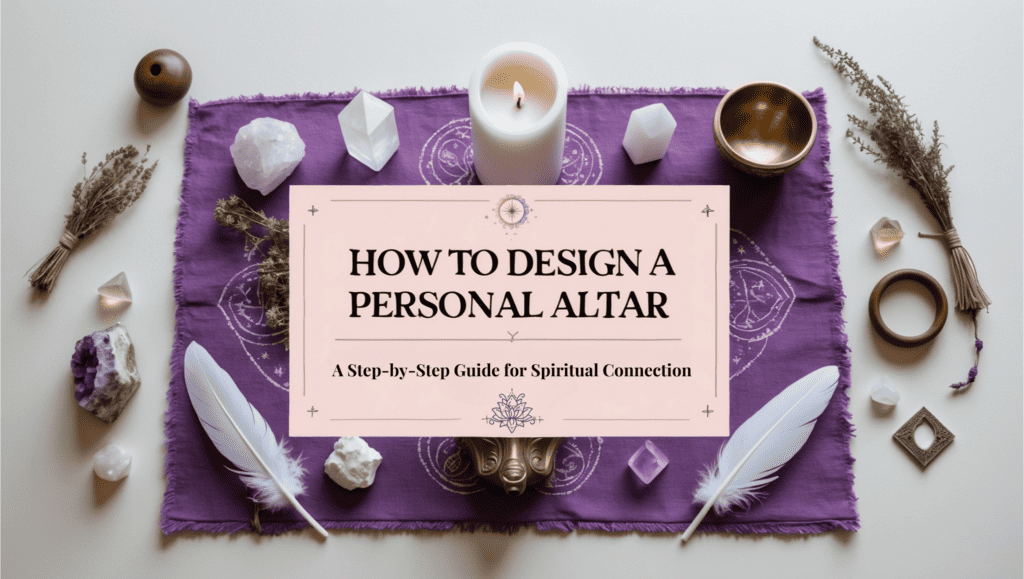
Table of Contents
Have you ever wanted to create a special space in your home that feels truly yours with a sacred touch? A personal altar might be exactly what your spirit is craving! This dedicated space can become the grounding sanctuary of your spiritual practice, offering a physical location to focus your intentions, connect with higher energies, and ground yourself in daily rituals. Creating a personal altar isn’t just about arranging pretty objects—it’s about designing a space that resonates deeply with your unique spiritual journey.
I’ve found that having my own altar has completely transformed my daily practice and brought a sense of sacred intention into my home. Whether you follow a specific spiritual tradition or simply want to create a mindful space for reflection, designing a personal altar can be a profoundly rewarding experience.
The beauty of a personal altar is that it’s entirely yours to customize—reflecting your beliefs, aesthetics, and spiritual needs in one special place. Let me guide you through creating an altar that will become your spiritual sanctuary!
This post may contain affiliate links. I only recommend products and services I genuinely believe in. Additionally, some images on this website may have been created with the help of AI to convey the feeling I wish to share with the reader.
What You Might Need
- Small table, shelf, or dedicated surface
- Altar cloth or special fabric
- Candles (tea lights, tapers, or pillar candles)
- Meaningful symbols (statues, images, or religious icons)
- Natural elements (crystals, plants, feathers, or shells)
- Incense or essential oil diffuser
- Small bowls for offerings
- Personal mementos or photographs
- Journal and pen for reflection
- Meditation cushion or chair
What is a Personal Altar and Why Create One?
Creating a personal altar was one of the most empowering spiritual decisions I’ve ever made! When I first began exploring spiritual practices, I noticed how scattered my energy felt without having a dedicated space to focus my intentions.
Once I established my altar, everything changed—my meditation deepened, my rituals felt more meaningful, and I finally had a visual representation of my spiritual journey right there in my home.
Think of a personal altar as your spiritual anchor in the physical world. It serves as a bridge between the mundane and the sacred, a physical space that reminds you of your connection to something greater. Across countless spiritual traditions—from Buddhism to Hinduism, Paganism to Christianity—sacred spaces have been created to honor divine energies and ancestors.
Your personal altar doesn’t need to follow strict religious guidelines (unless that resonates with you!); instead, it can be a beautiful reflection of your unique spiritual path and the energies you wish to invite into your life.
Sacred Space for Daily Practice
A personal altar provides a designated area where you can return daily for meditation, prayer, or simple moments of mindfulness. Having this consistent sacred space helps train your mind to shift into a spiritual state more quickly whenever you approach your altar.
Connection to Higher Energies
Your altar serves as a focal point for divine connection, helping you communicate with deities, angels, ancestors, or whatever higher power resonates with your beliefs. The physical objects create a channel for spiritual energies to flow more easily into your awareness.
Visual Reminder of Intentions
By carefully selecting objects that represent your spiritual goals and desires, your altar becomes a visual affirmation of your intentions. Each time you pass by or engage with your altar, you’re subtly reinforcing these intentions in your subconscious mind.
How to Create a Sacred Space
- Choose a location that feels naturally peaceful and somewhat removed from household traffic
- Clear the space completely before setting up your altar
- Consider smudging or energetically cleansing the area with sage, palo santo, or sound
- Set a clear intention for what you want your altar to represent before adding any items
- Trust your intuition when selecting and arranging objects—there’s no “wrong” way to create your sacred space
Picture This
A quiet corner of your bedroom bathed in soft morning light, where a small wooden table holds carefully arranged treasures that speak to your soul. Incense smoke curls upward, carrying your prayers as you sit in peaceful meditation before your personal altar, feeling completely centered and connected to something greater than yourself.
1. Choosing the Right Location for Your Personal Altar

Finding the perfect spot for your altar can completely transform your spiritual practice! When I first began, I placed my altar in a busy hallway and quickly realized how challenging it was to connect deeply in such a high-traffic area. After relocating to a quiet corner of my bedroom, everything shifted—I found myself naturally drawn to my sacred space each morning and evening, creating a beautiful rhythm to my spiritual routine.
The location of your personal altar matters more than you might initially think. Energy flows differently throughout your home, and certain spaces naturally lend themselves to contemplation and spiritual connection. Your altar deserves a spot that feels somewhat protected and separate from the hustle of daily life. Consider not just the practical aspects of space and accessibility, but also the energetic qualities of different areas in your home. Trust your intuition—you’ll likely feel a natural pull toward the space that’s meant to hold your sacred objects.
Finding Your Sacred Corner
The ideal location should feel naturally peaceful and somewhat removed from the busiest areas of your home. Notice where you already feel most contemplative and at ease, as these areas often have the perfect energy for a personal altar.
Energy Flow Considerations
In many traditions, the northeast corner of a room is considered auspicious for spiritual activities. However, what matters most is finding a spot where energy feels clear and positive to you personally, regardless of directional guidelines.
Creating Privacy and Boundaries
Your altar deserves protection from disturbances. Consider using a room divider, curtain, or simply placing your altar in a location where others in your household know to respect as your sacred space.
How to Select the Perfect Location
- Spend time in different areas of your home with eyes closed, noticing how each space feels energetically
- Consider practical needs like surface stability, protection from pets or children, and natural light
- Choose a location you’ll naturally see daily to remind you of your spiritual practice
- Ensure the space has enough room for you to sit comfortably in front of your altar
- Test the spot by sitting quietly for 10 minutes to see if it feels right before committing
Picture This
A peaceful alcove near your bedroom window catches the first light of dawn, illuminating your carefully arranged altar with a golden glow. The space feels naturally set apart, as if whispering for sacred use. Each time you approach your personal altar in this special location, you feel an immediate sense of peace wash over you, knowing this space is dedicated solely to your spiritual connection.
2. Determining Your Altar’s Purpose and Intention

When I created my first personal altar, I made the mistake of trying to incorporate too many spiritual purposes at once! It quickly became cluttered and confusing, with ancestor photos next to manifestation crystals and meditation tools.
Once I took time to really clarify my primary intention—creating a space for daily mindfulness practice—everything fell into place naturally, and my altar finally felt cohesive and powerful.
Your altar’s purpose will serve as the foundation for every design decision you make going forward. Think of it as the spiritual blueprint that guides which objects you’ll include, how you’ll arrange them, and even what practices you’ll perform at your altar.
Some altars are dedicated to specific deities or spiritual figures, while others might focus on ancestor veneration, manifestation work, or serving as a meditation focal point. Your altar can certainly evolve over time, but starting with a clear intention helps create a space that feels focused and energetically aligned rather than scattered.
Clarifying Your Spiritual Focus
Take time to reflect on what aspects of spirituality most call to you right now. Are you seeking to deepen your connection with ancestors, work with specific deities, enhance your meditation practice, or create a space for manifestation work?
Seasonal vs. Permanent Altars
Consider whether your altar will be permanent or change with the seasons and sabbats. Seasonal altars celebrate the natural cycles and require regular refreshing, while permanent altars maintain consistent energy for ongoing practices.
Personal Growth and Spiritual Goals
Your altar can actively support your spiritual development by incorporating elements that represent qualities you’re working to cultivate. Choose a focus that aligns with your current spiritual journey and evolution.
How to Define Your Altar’s Purpose
- Spend time in meditation asking what spiritual support you most need right now
- Consider writing a clear intention statement for your altar in your journal
- Research different types of altars across traditions that resonate with your path
- Select one primary purpose before adding secondary elements
- Allow flexibility for your altar’s purpose to evolve as your spiritual practice deepens
Picture This
A thoughtfully arranged personal altar sits in the corner of your room, every object carefully selected to support your intention of ancestral connection. Family photographs, heirlooms passed through generations, and candles in your ancestors’ favorite colors create a cohesive energy that immediately transports you to a space of reverence and connection whenever you sit before your personal altar for your evening prayers.
3. Essential Elements to Include on Your Personal Altar
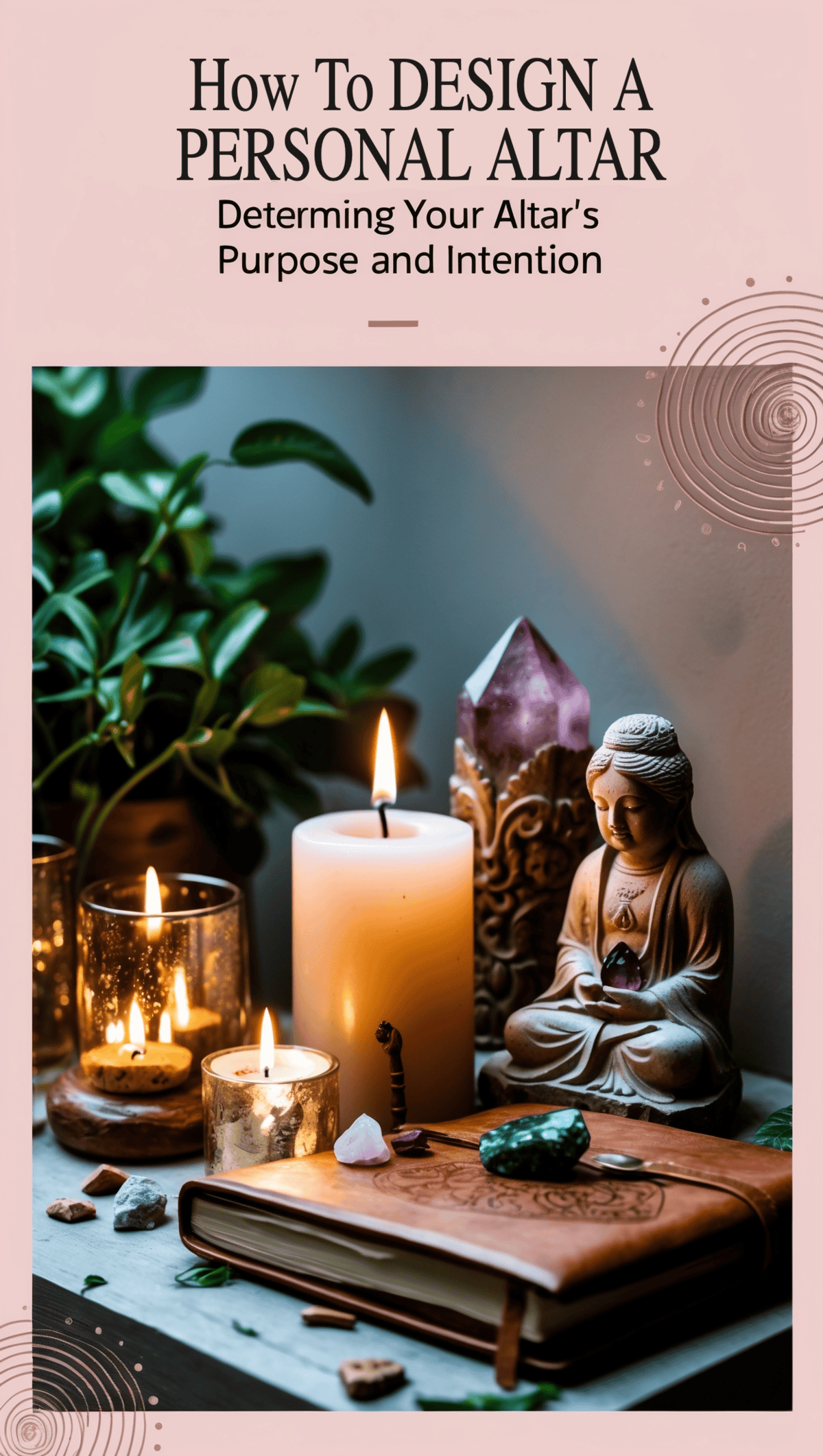
The first time I sat down to actually create my personal altar, I felt completely overwhelmed by all the possible items I could include! Should I use candles or incense? Crystals or plants? Images or symbols? Through much experimentation, I’ve learned that certain foundational elements create a balanced energetic framework that supports nearly any spiritual practice, while still leaving plenty of room for personal expression and specific traditions.
Think of your altar as having certain energetic “ingredients” that work together to create sacred space. While specific items will vary based on your spiritual tradition and personal preferences, most effective altars incorporate representations of the classical elements—earth, air, fire, water, and spirit.
These elemental energies create a balanced foundation for your spiritual work. Beyond these basics, you’ll want to include objects that specifically support your altar’s purpose and resonate with your unique spiritual journey. Remember, your altar is an evolving creation that can change and grow alongside your practice!
Elemental Representations
Including symbols of each element creates energetic balance in your sacred space. Earth might be represented by stones or plants, air by feathers or incense, fire by candles, water by a small bowl, and spirit by religious symbols or personally meaningful objects.
Sacred Tools and Implements
Depending on your spiritual practices, consider including tools like meditation bells, divination implements, prayer beads, or ritual items that support your specific traditions and regular practices.
Personal Connection Objects
The most powerful altar items are often those with deep personal significance—family heirlooms, objects from meaningful journeys, or items that intuitively call to you, regardless of their traditional “spiritual” value.
How to Gather Your Essential Elements
- Start with representations of the five elements as your foundation
- Add objects specifically connected to your altar’s primary purpose
- Include at least one item that has deep personal meaning or history
- Consider adding natural objects from places that feel spiritually significant to you
- Allow space for your collection to evolve—you don’t need everything at once
Picture This
Your personal altar glows in the evening light, a perfect balance of the elements visible in its thoughtful arrangement. A stone from your favorite beach represents earth, feathers collected on a meaningful hike symbolize air, a copper bowl of water reflects the candlelight, and in the center sits a small statue that instantly connects you to the divine. Each essential element on your personal altar works in harmony to create a space that feels completely alive with sacred energy.
4. Selecting Meaningful Objects and Symbols

The most powerful moment in creating my personal altar came when I finally incorporated my grandmother’s prayer beads! Even though I don’t follow her religious faith, these beads carry the energy of her devotion and our family’s spiritual lineage. Every time I touch them during my morning ritual, I feel an immediate connection not just to her memory, but to the unbroken chain of seekers in my bloodline who sought connection with something greater than themselves.
The objects on your altar should speak directly to your heart and soul. While beautiful, aesthetically pleasing items certainly have their place, the most potent altar objects are those that carry genuine meaning and resonance for you personally.
These meaningful items become energetic anchors on your altar, holding specific frequencies and intentions. They might be traditional religious symbols, natural objects that caught your attention at significant moments, family heirlooms, or items that intuitively call to you.
Trust your intuition when selecting these objects—your spirit knows which items belong in your sacred space.
Personal Items with Spiritual Significance
Consider including objects from your personal history that carry spiritual significance—gifts from mentors, items from meaningful journeys, or objects that appeared in your life during pivotal spiritual moments.
Natural Elements as Spiritual Symbols
Nature provides powerful altar objects charged with the earth’s energy. Crystals, feathers, shells, special stones, dried flowers, seeds, and other natural finds often carry specific energetic properties that can support your spiritual intentions.
Traditional Religious Icons
If you follow a specific tradition, incorporate appropriate religious symbols, statues, or images that represent deities or spiritual figures important to your path. These traditional elements carry centuries of devotional energy.
How to Choose Your Most Powerful Symbols
- Hold potential altar objects in your hands and notice which ones create an energetic response
- Consider the story behind each item and whether it aligns with your altar’s purpose
- Select objects that naturally draw your attention and feel good to look at daily
- Include at least one item that connects you to your ancestry or spiritual lineage
- Allow yourself to be surprised by unconventional objects that might not seem “spiritual” but strongly call to you
Picture This
Each object on your personal altar tells a story—the smooth river stone from your grandmother’s garden, the feather found on a hike when you received an important insight, the small statue that called to you from a shop window when you weren’t even looking. As you light the candle on your personal altar, these meaningful symbols come alive with energy, each one holding a piece of your spiritual journey and creating a tapestry of personal meaning that makes this space uniquely yours.
5. Arranging Your Altar Items: Design Principles and Layouts

I spent weeks feeling frustrated that my altar just didn’t “feel right” until I discovered the power of intentional arrangement! My objects were all meaningful, but they felt chaotic and disconnected until I learned to organize them according to the cardinal directions and their elemental associations. Suddenly, everything clicked—my altar not only looked more balanced visually, but the energy flowed beautifully during my practices.
The arrangement of your altar items is far more than just aesthetics—it’s about creating energetic flow and relationship between the objects. Many spiritual traditions offer specific guidelines for altar arrangements, often based on directional correspondences (north, south, east, west) or elemental placements. While these traditional layouts can provide helpful structure, don’t be afraid to adapt them based on your intuition and the specific needs of your practice.
The key is creating an arrangement that feels harmonious and supports the energy you’re trying to cultivate, making your personal altar both visually appealing and energetically effective.
Directional Correspondences
Many traditions associate directions with specific elements and energies: north with earth and stability, east with air and new beginnings, south with fire and passion, and west with water and emotion. Arranging objects according to these correspondences can create powerful energetic alignment.
Creating Visual Harmony
Beyond spiritual correspondences, consider basic design principles like balance, focal points, and visual flow. Your altar should draw your eye naturally to its center or most important elements, with a pleasing overall composition.
Layering and Height Variation
Create visual interest by placing some objects on small boxes, books, or stands to create different height levels. This three-dimensional approach creates energy movement and helps distinguish between different functional areas of your altar.
How to Create an Effective Altar Arrangement
- Start by placing your most important central object or focal point
- Arrange remaining items according to directional correspondences if relevant to your practice
- Create visual balance by distributing colors and sizes evenly across your altar
- Leave some empty space to allow energy to flow and prevent a cluttered feeling
- Step back periodically during arrangement to assess the overall feeling and make adjustments
Picture This
Your personal altar displays perfect harmony in its arrangement—a central candle creates a natural focal point, with objects thoughtfully placed in relation to the four directions. Crystals ground the northern edge, feathers dance along the eastern side, candles warm the southern region, and a small bowl of water anchors the western boundary. The arrangement of your personal altar creates such natural flow that your eyes and energy move effortlessly across the sacred space, each item in perfect relationship with the others.
6. Colors and Textiles: Setting the Energetic Tone

I completely underestimated the power of colors on my personal altar until I switched from a plain white cloth to a deep purple one! The shift was immediate and profound—my meditation instantly became deeper, and I felt a stronger connection to my intuitive abilities. That simple textile change transformed the entire energetic signature of my sacred space and aligned it more powerfully with my spiritual goals.
The foundation of your altar often begins with the cloth or covering you select, and this choice sets the energetic tone for everything placed upon it. Colors carry specific vibrational frequencies and psychological impacts, making your color selections a powerful aspect of altar design.
Beyond the base cloth, consider how the colors of candles, objects, and decorative elements work together to support your altar’s purpose. Different spiritual traditions have specific color correspondences, but your personal associations with colors matter just as much. Choose textiles and color schemes that both support your altar’s purpose and feel personally resonant.
Color Symbolism and Energy
Different colors carry specific energetic properties—purple for spirituality and intuition, blue for peace and communication, green for growth and abundance, red for passion and vitality, white for purity and clarity. Select colors that align with your altar’s intention.
Texture and Material Considerations
Beyond color, consider the sensory experience of different fabrics. Smooth silk creates a different energy than earthy linen or rich velvet. The texture of your altar cloth contributes significantly to the overall feeling of your sacred space.
Layering Textiles for Depth
Create visual and energetic complexity by layering different textiles—perhaps a base cloth that covers the entire surface with smaller ritual cloths on top for specific working areas or to highlight important objects.
How to Select Your Perfect Altar Textiles
- Research traditional color correspondences for your specific spiritual practice
- Consider your personal reactions to different colors and which ones feel energetically aligned
- Select natural fibers when possible for their connection to earth energies
- Try different color combinations to see which creates the desired feeling
- Consider having multiple altar cloths to change with the seasons or for different types of ritual work
Picture This
A luxurious indigo silk cloth drapes elegantly across your altar surface, immediately establishing a sense of mystery and spiritual depth. The rich color seems to shimmer slightly in the candlelight, creating the perfect backdrop for your carefully selected sacred objects. As you approach your personal altar, the textile’s color instantly shifts your awareness toward inner knowing and intuitive connection, setting the perfect energetic tone for your evening meditation.
7. Incorporating Elements for All Five Senses
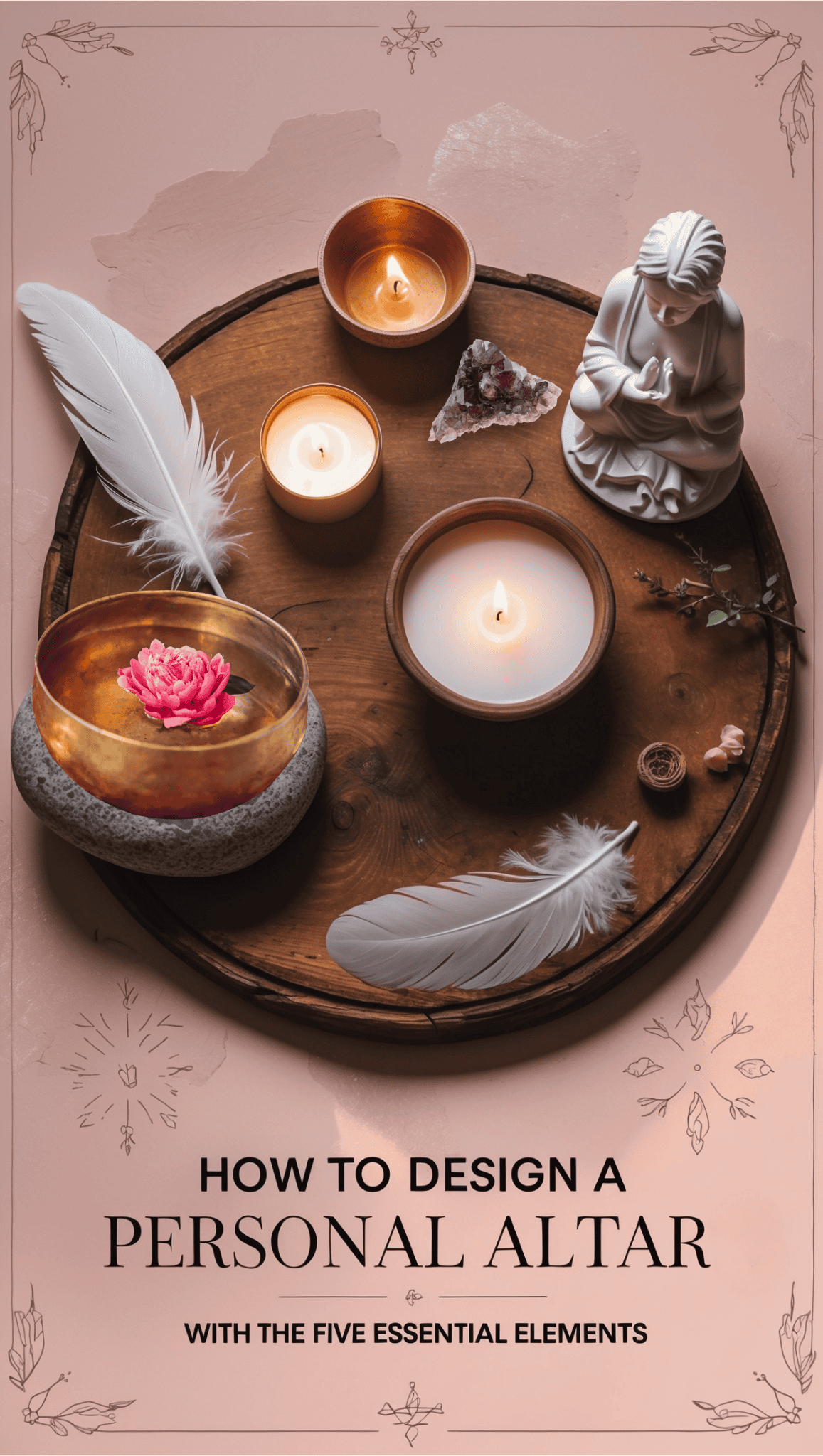
My spiritual practice completely transformed once I realized my altar could engage all my senses! Adding a small singing bowl created an auditory dimension that helped me transition into a sacred space while keeping a special herbal tea near my altar added a sense of taste to my morning ritual. Each sensory element made my practice feel more immersive and present—truly a full-body spiritual experience!
A truly powerful altar engages all five senses, creating a complete sensory experience that helps you shift more fully into sacred awareness. When multiple senses are engaged, your nervous system receives clear signals that you’re entering a different state of consciousness, making your spiritual practice more immersive and effective.
Each sense can be activated through specific altar elements, creating a rich, multidimensional experience whenever you engage with your sacred space. By thoughtfully incorporating elements for sight, sound, smell, touch, and even taste, you create an altar that pulls you fully into the present moment—the essential foundation for any spiritual practice.
Creating Visual Beauty
Sight is often the first sense engaged by your altar through colors, arrangements, symbols, candles, and imagery. Consider how your altar looks in different lighting and times of day, perhaps incorporating reflective elements like mirrors or metals.
Sacred Sounds and Music
Introduce sound elements like bells, singing bowls, chimes, or recorded music to mark the beginning and end of your practice. Sound immediately shifts consciousness and creates energetic boundaries around your sacred time.
Aromatherapy and Sacred Scents
Scent bypasses the logical mind and connects directly to memory and emotion. Incorporate incense, essential oils, herb bundles, or scented candles that support your altar’s purpose and help trigger your shift into spiritual awareness.
How to Create a Multisensory Altar Experience
- Include at least one element for each of the five senses
- Create a small ritual that activates each sense when beginning your practice
- Consider how different sensory elements might work together harmoniously
- Select scents and sounds specifically supportive of your altar’s purpose
- Don’t overwhelm any single sense—aim for subtle but noticeable sensory experiences
Picture This
As you approach your personal altar, your experience unfolds through all five senses—the soft glow of candles catches your eye, the gentle sound of a small fountain creates peaceful background music, the subtle scent of sandalwood incense grounds your awareness, your fingers trace the smooth surface of a crystal, and a small cup of ceremonial tea awaits to complete your ritual. Each sensory element of your personal altar works in harmony to create a complete experience that immediately transports you into sacred space.
8. Maintaining and Refreshing Your Personal Altar
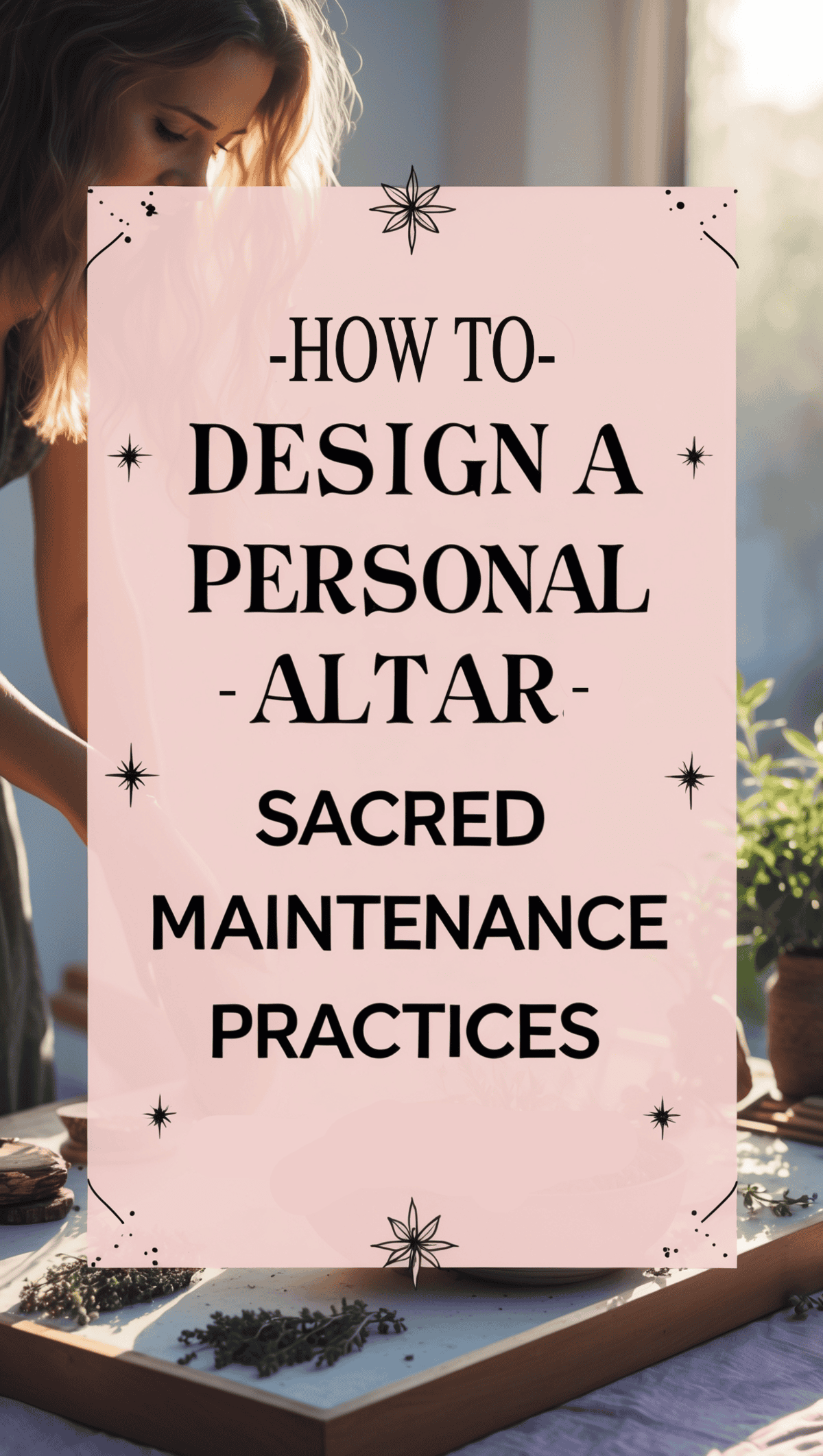
I learned the hard way that neglecting my altar’s maintenance completely disrupted my spiritual practice! After weeks without dusting or refreshing the offerings, the energy felt stagnant and uninspiring. Now, I have a weekly “altar tending” ritual every Sunday morning, and it’s become one of my favorite spiritual practices—clearing, cleansing, and refreshing my sacred space, and adding a few fresh flowers each week has become a renewal practice I have come to truly enjoy.
Like any sacred space, your altar requires regular attention and care to maintain its energetic potency. Dust, stagnant energy, and neglect can all diminish the power of your sacred space over time. Creating regular maintenance practices not only keeps your altar physically clean but also reinforces your commitment to your spiritual path. Many traditions emphasize the importance of refreshing altar offerings, updating seasonal elements, and energetically cleansing the space. These maintenance rituals needn’t be complicated—even simple, consistent attention communicates respect for your spiritual practice and the energies you work with at your altar.
Regular Cleansing Practices
Develop consistent habits for both physical cleaning (dusting, wiping surfaces) and energetic cleansing (using sound, smoke, or visualization) to keep your altar’s energy clear and vibrant.
Refreshing Offerings and Elements
If your practice includes offerings of food, water, or flowers, establish regular schedules for replacing these items before they become wilted or stagnant. Fresh offerings signify respect and ongoing attention.
Seasonal Updates and Celebrations
Consider how your altar might evolve with the turning of the wheel of the year. Incorporating seasonal elements keeps your altar aligned with natural cycles and prevents spiritual stagnation.
How to Create a Meaningful Maintenance Practice
- Establish a regular schedule for physical cleaning of your altar space
- Create a simple ritual for energetic cleansing using sound, smoke, or visualization
- Mark seasonal changes with intentional altar updates
- Pay attention to when objects no longer feel vibrant or relevant and be willing to replace them
- Consider maintenance itself as a spiritual practice rather than just a chore
Picture This
Sunday morning sunlight streams across your altar as you carefully remove each object, gently wiping the surface clean before smudging the space with sacred herbs. The smoke curls around your hands as you cleanse each item before replacing it with intentional care. This simple act of tending to your personal altar feels like a moving meditation, renewing both the sacred space and your commitment to your spiritual path with each mindful gesture.
9. Using Your Personal Altar in Daily Practice

Establishing a consistent daily ritual at my altar has profoundly helped me deepen my relationship with my spirituality! What began as a beautiful but rarely used space became the cornerstone of my practice once I committed to just five minutes every morning. Now, this brief daily connection grounds my entire day and creates a thread of intention that weaves through everything I do.
Even the most beautiful altar serves little purpose if it isn’t regularly used. Integrating your altar into daily life creates a rhythm of connection that deepens your spiritual practice over time. Your altar interactions needn’t be elaborate or time-consuming—even brief, consistent engagement creates powerful results.
Consider developing simple rituals for morning and evening, as well as more extended practices for special occasions or specific intentions. The key is consistency rather than complexity. As you develop regular altar practices, you’ll likely find that your sacred space becomes more energetically charged and responsive, creating a beautiful feedback loop that enhances your spiritual connection.
Morning Activation Rituals
Create a simple morning practice to “wake up” your altar and set intentions for your day. This might include lighting a candle, offering a brief prayer, or simply taking a moment of silent acknowledgment before beginning your day.
Evening Gratitude and Reflection
Develop an evening ritual to express gratitude and reflect on your day. This creates beautiful energetic bookends to your days and reinforces your spiritual focus.
Deepening Meditation Practices
Your altar provides a perfect focal point for meditation, offering visual anchors that can deepen your practice and help maintain focus. Experiment with different meditation techniques using your altar as support.
How to Develop Your Personal Altar Practice
- Start with brief but consistent daily interactions rather than lengthy occasional visits
- Create simple rituals for different purposes (grounding, inspiration, healing, celebration)
- Use your journal to track insights received during altar time
- Consider taking a photo of your altar to connect with its energy when you’re away from home
- Allow your practice to evolve naturally without forcing specific experiences
Picture This
The soft morning light finds you seated before your personal altar, eyes closed in peaceful meditation after lighting the central candle and offering a simple prayer. This quiet moment has become as essential to your morning as breathing—a touchstone of connection before the day begins. Your personal altar awaits your return each evening, a sacred constant in your ever-changing days, ready to hold space for your spiritual practice no matter what life brings.
10. Personal Altar Ideas for Different Spiritual Paths
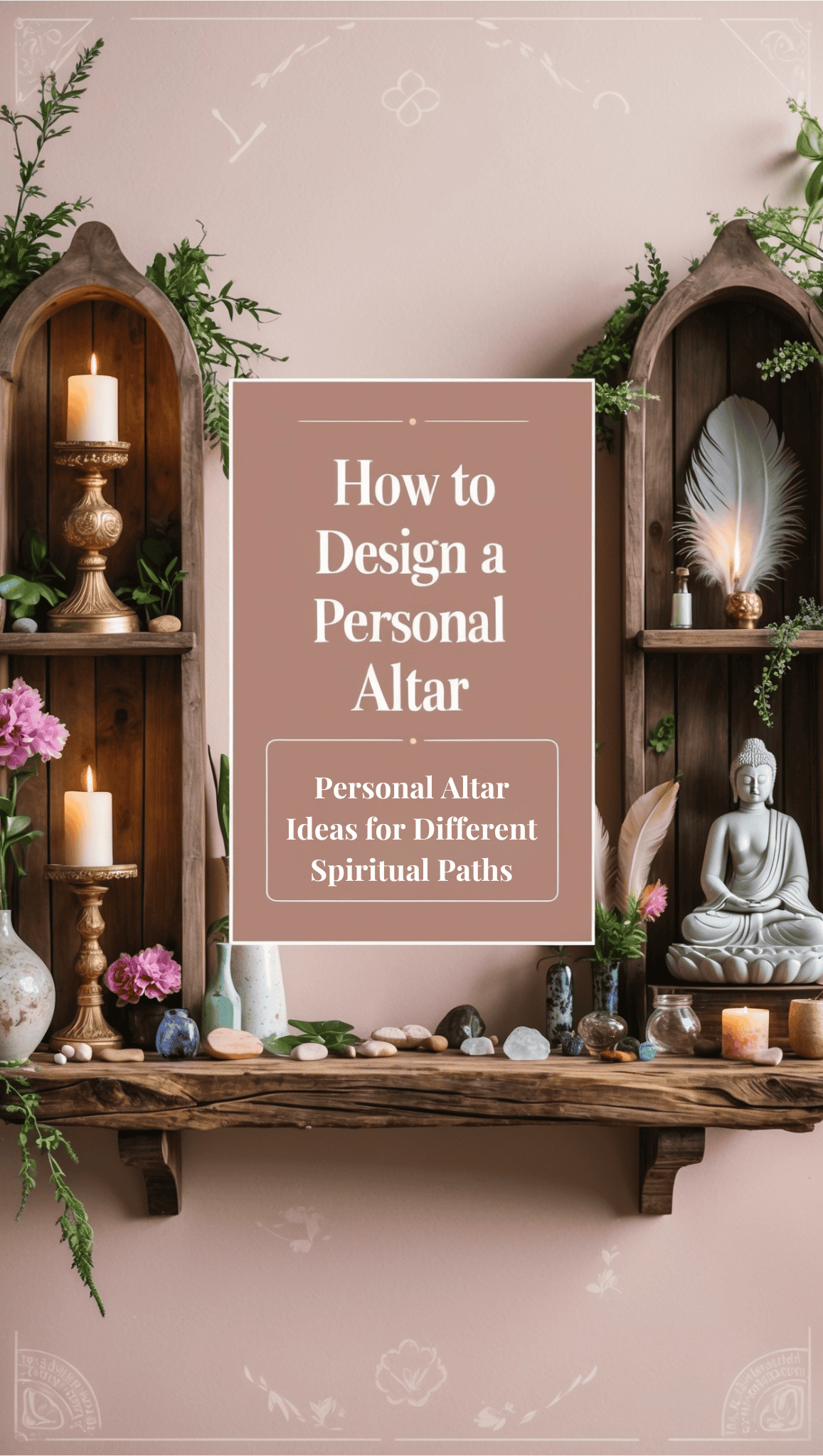
I spent years feeling like my altar wasn’t “authentic” because it didn’t match any single tradition perfectly! Once I gave myself permission to create a personal altar that honored my love of a variety of faiths and earth-based spirituality, everything shifted. My unique altar—with both a statue of Mary and a collection of found natural objects—finally felt like an honest reflection of my spiritual journey rather than someone else’s prescription.
One of the most beautiful aspects of personal altars is how they can be adapted to honor any spiritual tradition or blend multiple paths in a respectful, meaningful way. Whether you follow an established religion, work within a specific spiritual framework, or create your own eclectic practice, your altar can reflect your unique approach to spirituality.
While certain traditions have specific requirements for altar setup, many can be adapted for personal practice while still honoring their essential elements. The key is approaching your altar design with sincerity and respect, creating a space that genuinely supports your spiritual connection rather than simply copying aesthetics without understanding.
Traditional Religious Altars
Many established religions have specific altar traditions that can be adapted for home use. Research the essential elements of your tradition’s altar practices while considering which aspects are mandatory and which might be adapted for personal use.
Nature-Based and Pagan Altars
Earth-centered spiritual paths often create altars that honor the elements, natural cycles, and the divine as expressed through nature. These altars frequently incorporate found natural objects and change with the seasons.
Meditation and Mindfulness Altars
For those focused primarily on meditation practices, create a simple, uncluttered altar with minimal distractions that supports present-moment awareness and inner silence.
How to Honor Your Unique Spiritual Path
- Research traditional altar setups for any established paths you follow
- Consider which elements feel essential to your practice and which are optional
- Respect the original context of religious items while adapting them thoughtfully
- Allow your altar to evolve as your understanding of your tradition deepens
- Trust that sincerity of intention matters more than perfect replication of traditional forms
Picture This
Your personal altar beautifully reflects your unique spiritual journey, honoring both your ancestral traditions and more recently discovered practices. A small statue from your family’s faith stands alongside crystals and natural elements that represent your evolving path. This thoughtfully arranged personal altar tells the story of your spiritual evolution, creating a space that honors where you’ve come from while supporting where you’re going—a perfect visual representation of your authentic spiritual self.
Want to Simplify Your Wellness Journey?
As you’ve learned throughout this article, creating a personal altar offers a powerful way to enhance your spiritual practice, but it’s just one piece of a successful and sustainable wellness journey. Creating a balanced life requires a holistic approach that integrates spiritual practices, proper self-care, mindfulness strategies, and consistency—all tailored to your unique needs and lifestyle.

Ready for a Customized Approach to Your Wellness Journey?
My Wellness Lifestyle Strong Foundation Audit helps you cut through the confusion and create a comprehensive strategy that works specifically for you. During this 90-minute audit session, we’ll assess your current habits, identify how your spiritual practices like your personal altar can complement other wellness routines, and develop a practical plan for whole-person wellbeing.
You’ll receive a personalized blueprint that addresses not just spiritual practices, but all the critical elements that support your wellness—from mindfulness timing to progress tracking methods that keep you motivated. Skip the frustrating cycle of trial and error and start your journey with clarity and confidence. Book your Wellness Lifestyle Strong Foundation Audit today and transform your approach to lasting wellness!
Personalized Wellness Plan Development

Final Thoughts
Creating a personal altar is truly one of the most rewarding spiritual practices you can undertake! Throughout this guide, we’ve explored everything from selecting the perfect location to choosing meaningful objects, arranging them effectively, and maintaining your sacred space over time.
Remember that your altar is a living creation that will evolve alongside your spiritual journey—there’s no need for perfection, only authenticity and intention.
The beauty of a personal altar lies in its uniqueness. No two altars should look exactly alike because no two spiritual journeys are identical. Your altar should reflect your specific needs, beliefs, and aesthetic sensibilities. Start simple and allow your sacred space to grow organically as you deepen your practice and discover what truly resonates with your spirit.
I encourage you to begin creating your personal altar today, even if you start with just a candle and one meaningful object on a small corner shelf. The act of designating a sacred space in your home sends a powerful message to both your conscious and subconscious mind about the importance of your spiritual practice.
Your altar will become a grounding touchstone of connection in your daily life—a physical reminder of your commitment to spiritual growth and inner peace.
What will your personal altar reveal about your unique spiritual journey? I’d love to hear how your sacred space evolves and transforms your practice!
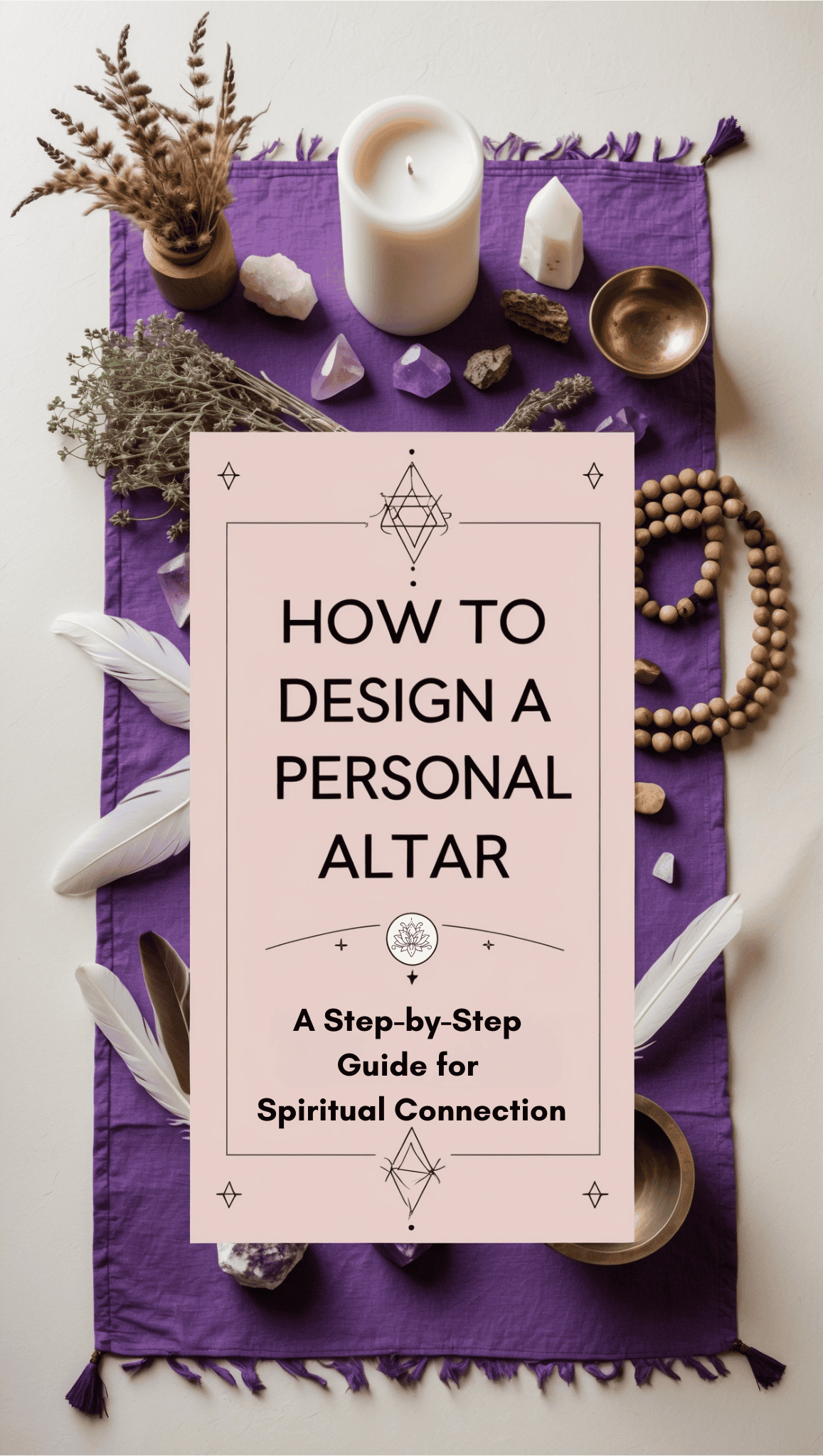
This post may contain affiliate links. I only recommend products and services I genuinely believe in. Additionally, some images on this website may have been created with the help of AI to convey the feeling I wish to share with the reader.
Frequently Asked Questions
Do I need to follow specific religious rules when creating my personal altar?
You only need to follow religious rules if you’re creating an altar within a specific traditional framework that has established guidelines. If you’re creating an eclectic or personal altar, you have complete freedom to design it in ways that feel meaningful to you. That said, it’s important to approach religious symbols and objects with respect, understanding their original context even if you’re incorporating them into a more personalized practice. The most important “rule” is that your altar feels authentic and supportive of your spiritual journey.
How often should I change or update my personal altar?
There’s no universal schedule for refreshing your altar—it depends entirely on your spiritual practice and the altar’s purpose. Some people update their altars with the changing seasons or moon phases, while others maintain relatively consistent altars with minor refreshes. At minimum, replace any fresh offerings (flowers, food, water) before they become stale, and dust your altar regularly. Pay attention to how your altar feels energetically; when it begins to feel stagnant or no longer aligned with your current spiritual focus, that’s your cue for a more significant update.
Can I create an altar if I live with people who don’t share my spiritual beliefs?
Absolutely! Many people successfully maintain personal altars in shared living situations. Consider creating a smaller, more discrete altar in your private space, like a bedside table, bookshelf, or even a special box that can be opened during practice and closed when not in use. Communicate respectfully with housemates about your practice and the importance of your sacred space. Many people find that even those who don’t share their beliefs will respect a clearly designated personal spiritual area once they understand its significance to you.
What if I don’t have much space for a personal altar?
Limited space doesn’t mean you can’t create a meaningful altar! Consider wall-mounted shelves, the top of a bookcase, a windowsill, or even a special box or tray that can be stored away when not in use. Some practitioners create “travel altars” in small tins that contain miniature versions of their important symbols. The physical size of your altar doesn’t determine its spiritual potency—even a tiny dedicated space can serve as a powerful focal point for your practice. Focus on including a few deeply meaningful items rather than trying to incorporate many elements in a small space.
How do I know if I’m doing it “right” when creating my personal altar?
The only “right” way to create a personal altar is the way that genuinely supports your spiritual connection. Rather than focusing on external validation or comparing your altar to others’, pay attention to how you feel when you interact with your sacred space. Does it inspire you? Does it help you feel connected? Does it support the kind of spiritual work you want to do? If you can answer yes to these questions, you’re doing it right! Trust your intuition and remember that your altar should evolve naturally over time as your practice deepens and changes.
About The Author
Jahlila is a Transformational Whole Self and Wellness Lifestyle Empowerment Coach, a devoted mother, passionate writer, and a fervent advocate for holistic wellness. She is the creator of The Tri-Sync Method, a comprehensive coaching program designed to help women establish a personalized wellness and self-care lifestyle for enduring total health wellness.
Her journey has transitioned from focusing solely on health and fitness to embracing a broader mission: empowering women through holistic approaches that unite body, mind, and spirit. Jahlila is dedicated to teaching, coaching, writing, and speaking about how wellness intersects with a joyful, balanced life. Her mission is to motivate women to prioritize and achieve their wellness goals, fostering a deep connection between a vibrant lifestyle and true happiness. Ready to reclaim your vitality, achieve mental clarity, and embrace your wellness journey? Explore more at The Tri-Sync Method.Com
Don’t wait another day to start living your healthiest, happiest life. Schedule a Free Discovery Consultation with Jahlila today to explore how The Tri-Sync Method can transform your life. For additional questions or personalized guidance, please visit our Contact Page.

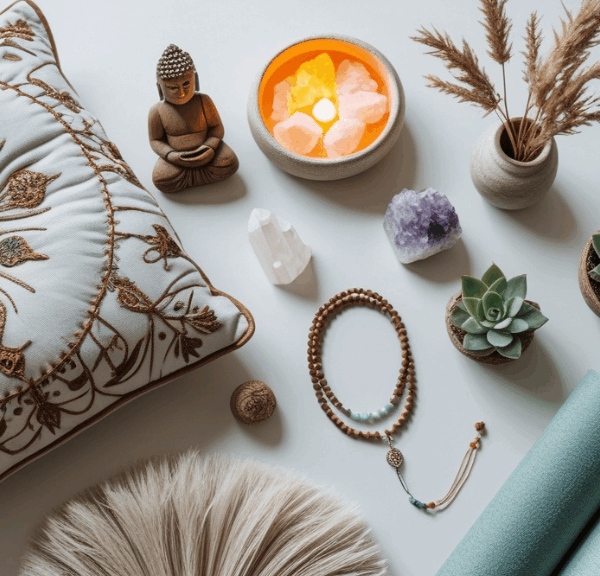
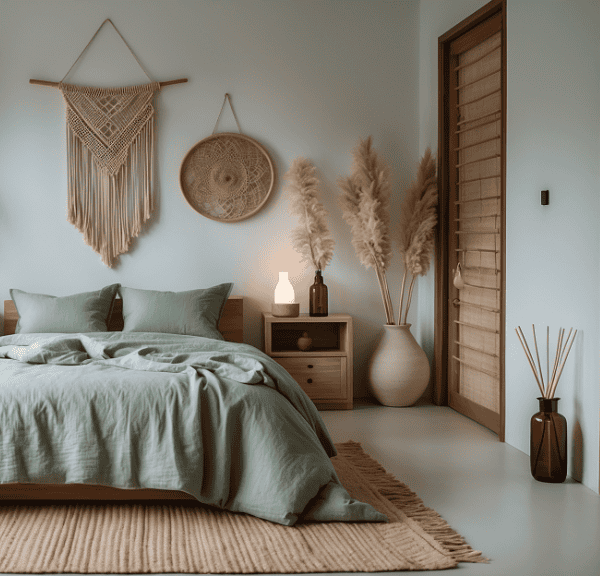
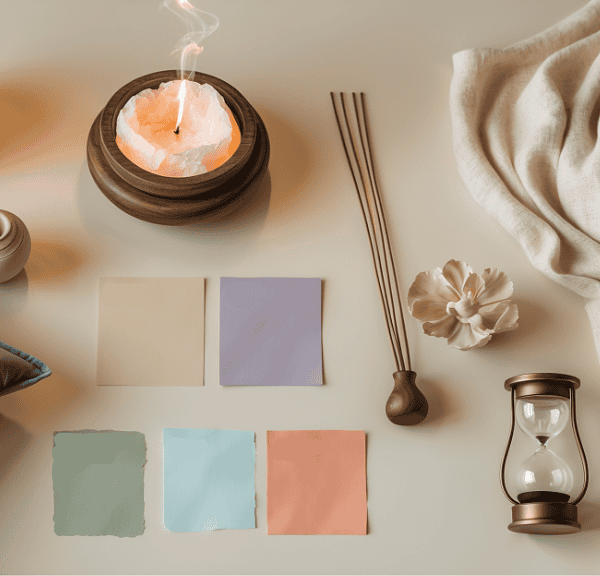
Leave a Reply